
More Wild Weather Second Half of August in U.S.
08/13/2023, 3:41 pm EDT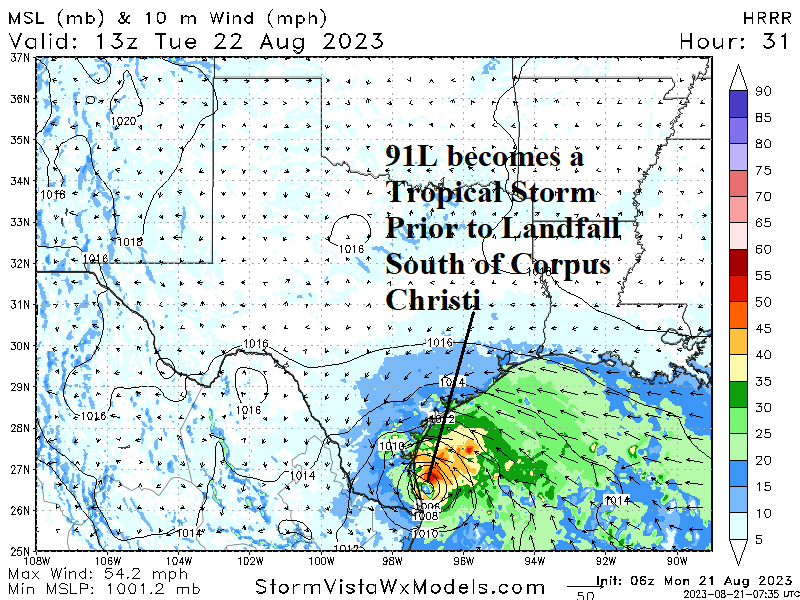
Tropical Disturbance 91L Becomes Weak Tropical Storm – Last Minute – Before Moving Inland South Texas Tomorrow
08/21/2023, 8:38 am EDT
Fig. 1: Latest depiction of recent solar cycle progression and sunspot number plus the projection of onset of solar cycle 25 maxima late in 2023.
Discussion: Solar cycle 25 is an over-achiever regarding sunspot activity so far. The sunspot activity produced by solar cycle 25 is well above the NASA forecast during the past couple years. The sunspot number projection based on persistence suggests that solar maxima will begin late in 2023/early 2024 (Fig. 1). During solar maxima, solar flares increase their frequency and strength and can lead to sudden stratospheric warming (SSW) events during northern hemisphere winter. SSW episodes cause the polar vortex to split and depart the polar region heading south to deliver potential arctic air masses to mid-latitude high population areas. The suggestion of this potential pattern is generally not indicated by current North America winter 2023-24 climate forecasts which prefer high-latitude warmth driven by an El Nino climate implying lack of arctic air masses to deliver to the U.S.
Recent examples of SSW events occurring during northern hemisphere winter when solar maxima was present are in 1990, 1989, and 1992. In DEC-90, a stratospheric warming episode occurred in December centered over Northern Canada (Fig. 2). At ground level, an arctic outbreak spawned and focused U.S. deliver on the western half of the nation (Fig. 3).
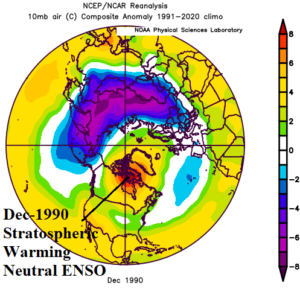
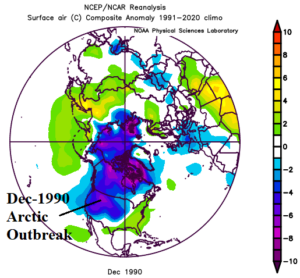
Fig. 2-3: Stratospheric warming related to solar maxima in December 1990 and an attendant arctic outbreak.
The previous December produced a similar SSW event centered over Northeast Canada (Fig. 4) causing an arctic outbreak delivered across the Central and East U.S. and surging into the Gulf Coast (Fig. 5). During January 1982, a widespread SSW event occurred covering most of the northern hemisphere polar latitudes (Fig. 6). The attendant arctic air was confined to the source region in Western Canada extending to the Northern U.S. (Fig. 7).

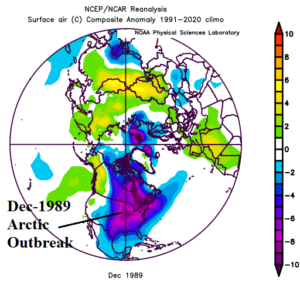
Fig. 4-5: Stratospheric warming related to solar maxima in December 1989 and an attendant arctic outbreak.
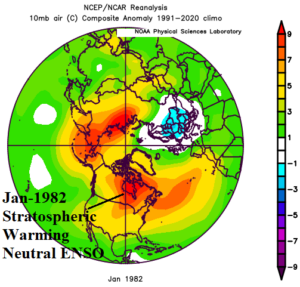
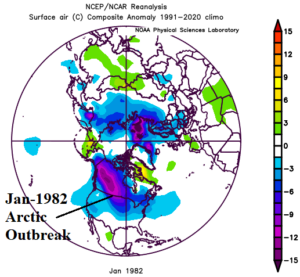
Fig. 6-7: Stratospheric warming related to solar maxima in January 1982 and an attendant arctic outbreak.
Summary: North America winter 2023-24 climate forecasts consistently indicate a warmer than normal Canadian climate extending to the Northern U.S. driven by mild El Nino-inspired westerlies. Threat of chilly weather due to storms stretches across the Southern U.S. Implications of the mild northern latitude climate regime is lack of arctic air to potentially deliver to the U.S. However, risk of increased solar flares and attendant strength increases during solar maxima which is expected to begin during northern hemisphere winter ahead. Solar flares can trigger sudden stratospheric warming (SSW) events in the polar region. The warming stratosphere causes the weather atmosphere (troposphere) beneath to cool and contract and cause arctic air to form. SSW events can cause significant arctic outbreaks and that risk is likely for winter 2023-24 in North America.
![Climate-Impact-Company-logo-sm[1]](https://climateimpactcompany.com/wp-content/uploads/2023/08/Climate-Impact-Company-logo-sm1.png)
